
How to Boost Customer Retention with Relevant Messaging
What exactly makes online shoppers open emails, click, convert and become repeat buyers?
In the world of crowded inboxes, the competition is, quite literally, only a click away. And in this environment, staying top of mind with customers and ultimately winning them over is all about providing value. While most retailers can’t compete with the fast delivery that Amazon offers, every single retailer can work to engage and retain customers with timely and relevant messaging in order to keep them coming back time and again.
Getting Real About What Customers Want
When you get down to it, once shoppers find what they need, they will likely buy from whichever site has the best deals and/or engages with them at the right time. And once someone orders from Amazon, the online retail giant’s customer retention is a force to be reckoned with. How Amazon engages consumers is one of the biggest contributors to its success. All of Amazon’s emails — from cart abandonment and post-purchase to replenishment, price drops, and new arrivals — only contain specific products and categories in which the recipients have actually shown interest.
For example, as someone who needs a healthy dose of caffeine to jump-start the day, I buy a lot of different types of coffee. I’ve bought coffee online from both Amazon and various other retailers, and I’m always amazed at how Amazon reminds me to buy more at exactly the right time.
While I receive emails from Amazon and various other sites regularly, the contents of those emails are quite different. Whereas the emails from Amazon are relevant to the types of coffee I’ve purchased or browsed, the emails from the other stores are typically promotional blasts that rarely showcase the actual products in which I’m interested. I’m sure that a code for 25% off herbal tea is relevant to someone, but it’s not to me (I’m strictly a coffee person).
And when the content of the email doesn’t resonate with me, not only do I not feel any need to click over to the site, but it also makes it feel like I’m receiving more emails than I actually am. Needless to say, there’s room for improvement when it comes to customer retention.
What is Customer Retention?
Customer retention is the process a business or organization takes to engage existing customers to ensure they continue buying a product. Essentially the main question your company should be asking itself is “Can you turn customers into loyal shoppers?”
By engaging with existing customers the right way, the hope is that they will continue to interact with your business. Understanding what your customer return rate is can give you an indication on whether or not your customers enjoy your product and how they view your business. The greatest customer retention strategies are the ones that concentrate on creating a long-lasting relationship with their customers.
Why is Customer Retention Important?
For starters, the cost of obtaining new customers is much higher than preserving existing customers. In addition, customers that have already been retained are more likely to participate in marketing and brand ambassadorship organically. The sole objective of a customer retention program is to create loyal lifetime customers that drive continued profits over time.
Customer retention pays off and we have the data to prove it. Statistics show that a 5% increase in customer retention can boost profits by 25% to 95%. Most repeat buyers are far less worried about price than new buyers because they have already used your product before. Working to retain customers proves to be a good investment because prioritizing customer retention offers long-term sustainable growth that continues to pay dividends long-term. Once you know what your customers want and what’s important to them, you can start creating the strategies and messaging needed to engage them.
7 Strategies for Relevant, Value-Add Messaging to Keep Customer Retention High
So what exactly can you do to provide value for customers, improve loyalty and grow revenue from repeat buyers without over-saturating your customers’ inboxes? Try these seven customer retention strategies on for size:
1) Feature relevant product recommendations in post-purchase messaging
When I receive a generic post-purchase email that doesn’t even show what I bought, let alone personalized recommendations based on that purchase, I don’t even take notice. In fact, I often just take it for a shipping confirmation email.
But post-purchase messaging can present a big opportunity for retailers to keep the fire alive with already engaged customers who are in a buying state of mind. For example, you can use this opportunity to suggest related products that customers may have missed, forgotten or didn’t even know existed. And offering first-time buyers a discount on their next order is a great way to start building loyalty.
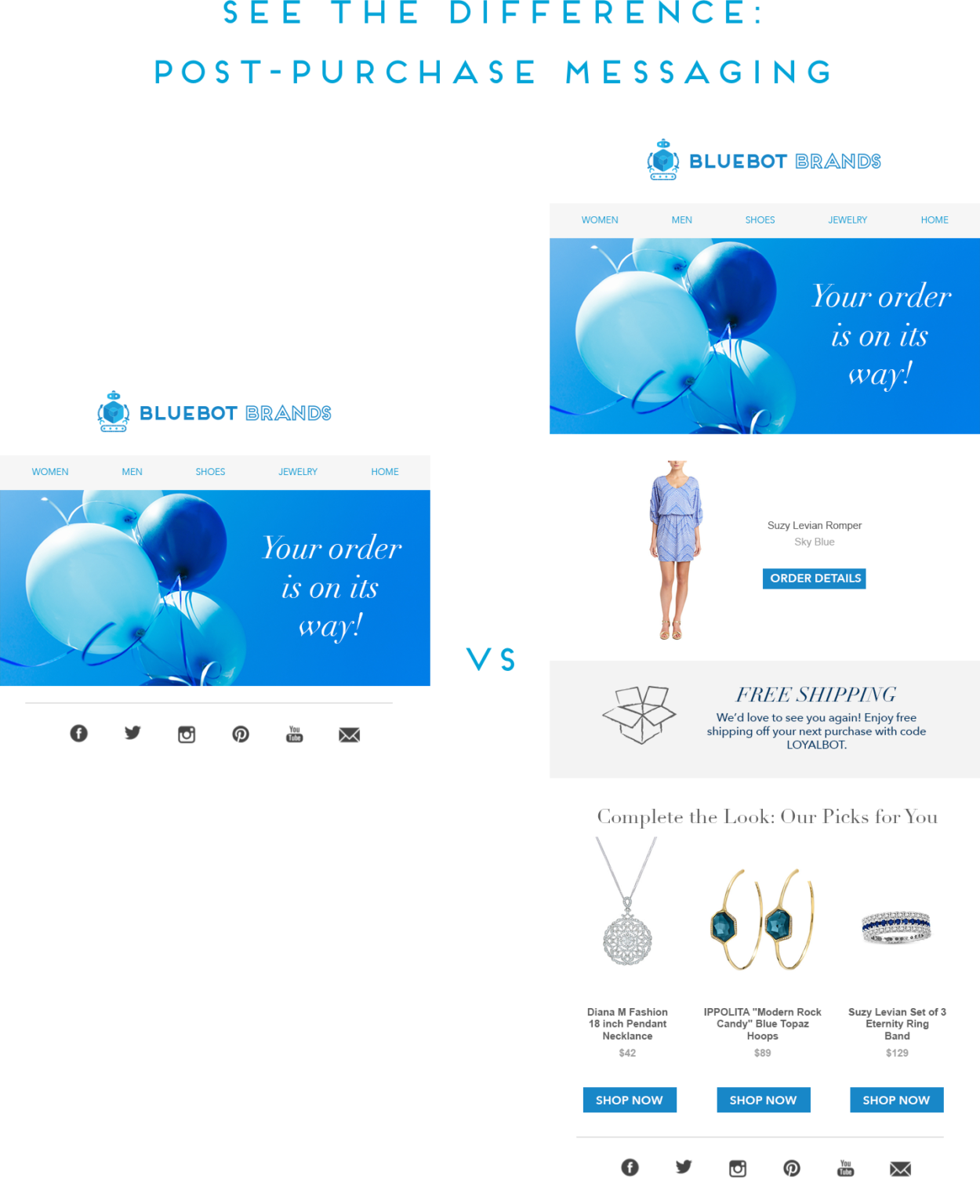
2) Entice them with intelligent replenishment offers
Nothing says outstanding service like reminding customers when it’s time to stock back up on products at just the right time. After all, what good is a weekly promo newsletter with a ton of random products when you know customers are really only interested in certain categories?
If you can combine product or category affinity information with an understanding of your customers’ typical buying cadences, you can encourage them to restock from you at just the right time. And when I get a reminder about something I actually do need to buy, ordering it from that retailer by simply clicking through the reminder is a no-brainer.
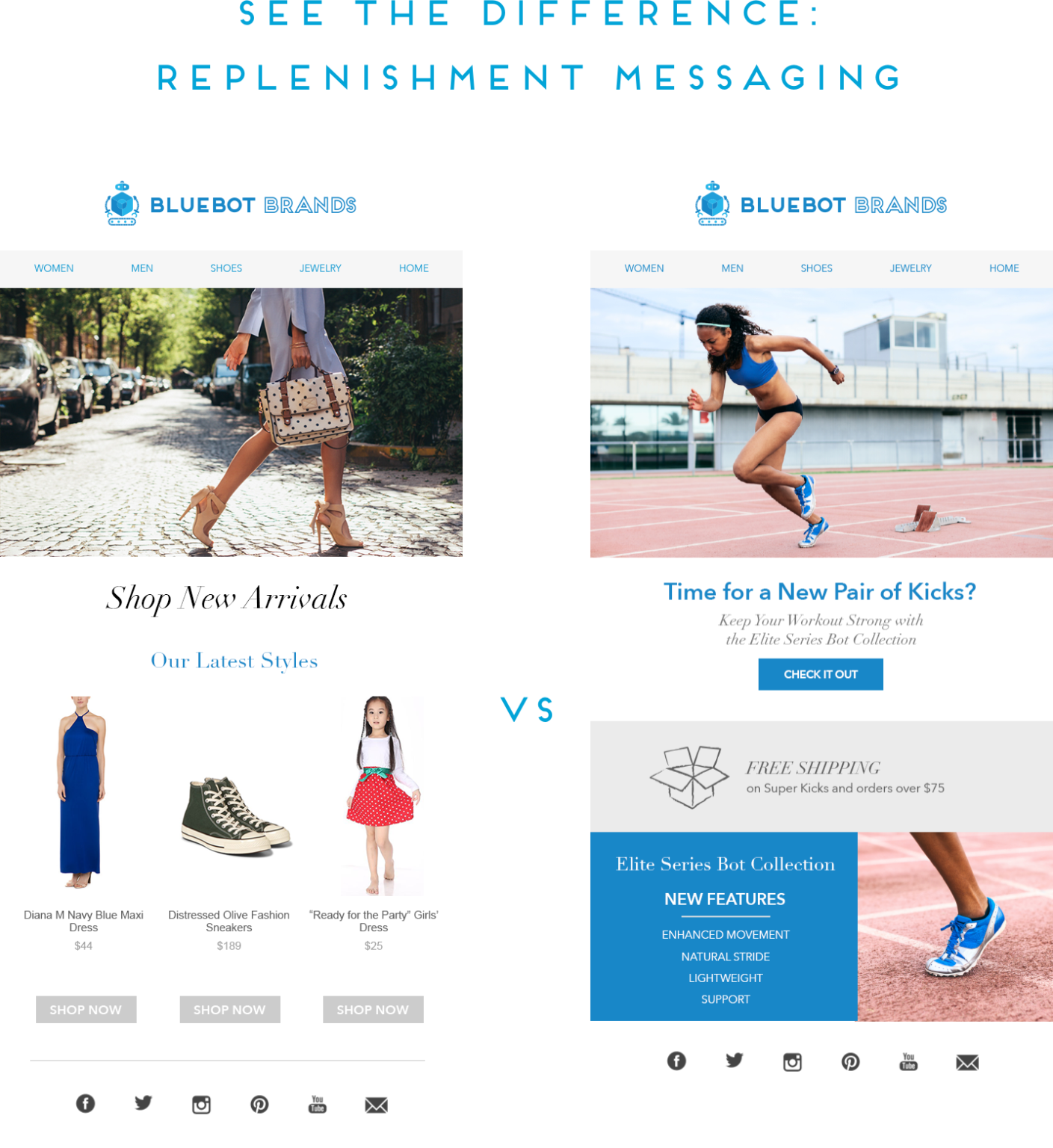
3) Re-capture missed opportunities with targeted price drop notifications
Some customers are always in search of a deal, and those discount buyers may be heavy browsers but cautious purchasers. Once you recognize who those buyers are, you have a perfect opportunity to win them over if the products they browsed drop in price — if you play your cards right.
Specifically, you can convert these deal-seekers with price sensitive messaging, such as price drop triggers for products they’ve browsed. The key in all of this is not to share all sale products, but to share sales items that match the particular products or categories that these customers browsed. When you get that right, you create a very compelling situation for those customers to make a purchase.
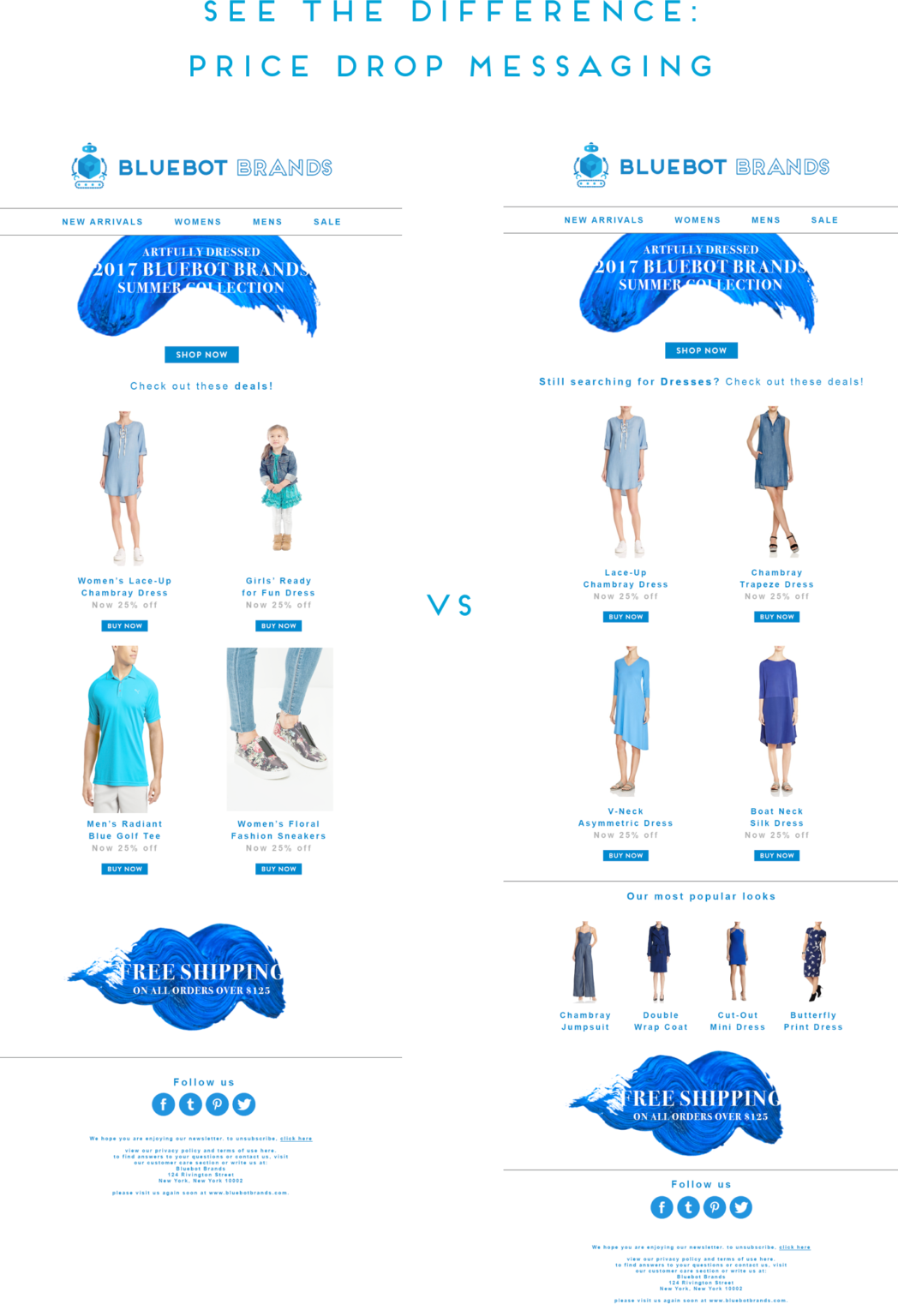
4) Send personalized new arrival recommendations
Keep your loyal and high-value customers in the know by notifying them when new arrivals come in. These notifications shouldn’t be about just any new arrivals though — they need to be personalized recommendations based on customers’ past purchase and browse behavior as well as their predicted affinities.
This type of personalization adds value for customers by providing recommendations that make sense for them and by making them feel like they’re the first to the gate. It’s the difference between “hm, this stuff is pretty cool and Brand XYZ really knows what I like” and “not interested, delete.”
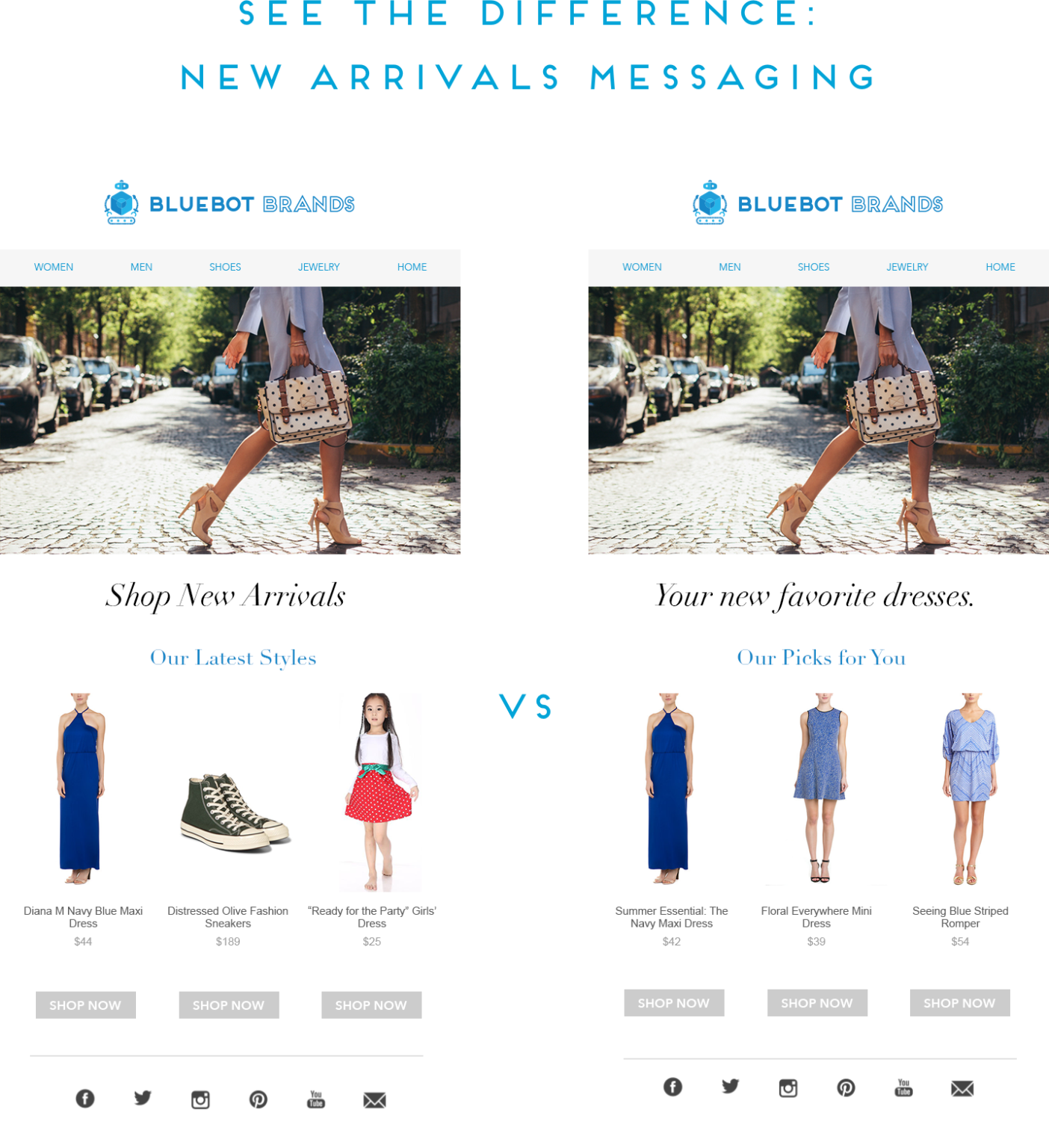
5) Go beyond cart abandonment
Many retailers think about abandonment only in terms of the shopping cart. This is understandable with cart abandonment rates ranging from 59.2% to 79.8%. However, abandonment goes beyond just the shopping cart, and for retailer marketers, capitalizing on the various opportunities is a must.
To make your abandonment emails work for you, start by considering abandonment behaviors:
- At-Risk Shoppers
- Category Abandonment
- Search Abandonment
- Product Abandonment
- Cart Abandonment
Once you know where the opportunities lie to re-engage your customers, you can begin creating personalized messages that capture their attention and reach them at the right moment in their shopping journey.
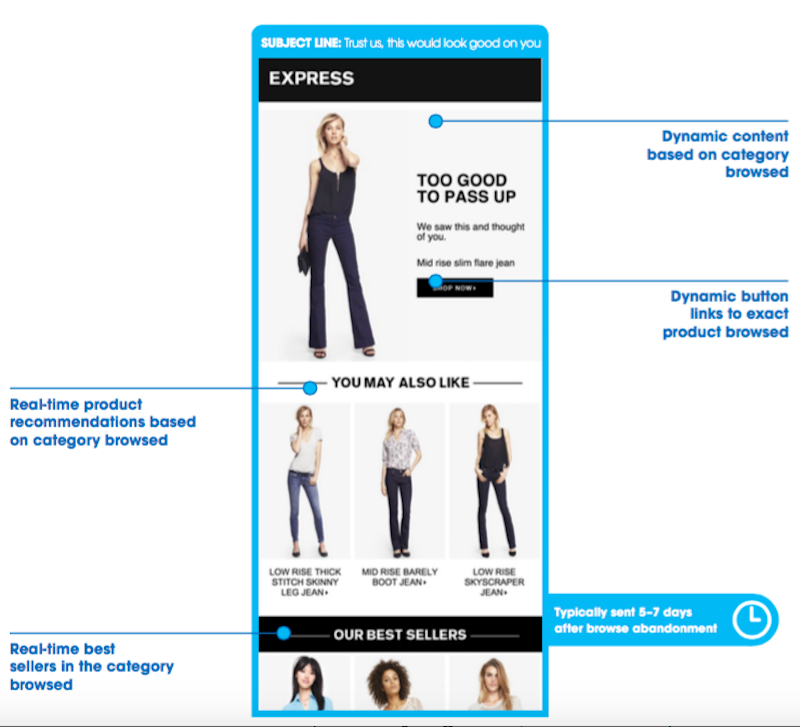
6) Give Your Loyal Customers Something to Talk About
Running a business is hard, and anybody that does will say the same thing… “loyalty is everything”. A loyalty program can boost customer retention while also attracting new customers.
To increase customer loyalty, you must know your audience. Where do their interests lie? What motivates them? To create a better customer experience and get customers talking, start with the following:
- Understand the Customer Lifecycle: In order to speak to them appropriately and gauge their level of loyalty, you need to understand where they are in the customer lifecycle, in order to produce the best marketing material.
- Use Personalized Product Recommendations: With thousands of emails reaching inboxes every day, customers appreciate messages that apply specifically to them.
- Offer Exclusive Opportunities: Give high-value customers an opportunity to pre-order a new product or exclusive perks like free shipping.
Loyalty doesn’t come easy but it can be extremely rewarding. See how fashion retailer New York & Company used their loyalty program to drive 40% of their sales.
7) Stay in Touch with SMS Campaigns
As technology continues to evolve and customers change their preferred method of communication, adoption is key. Enter SMS.
SMS is incredibly reliable and it has a 98% open rate! Texts are also quick to make an immediate impact on sales. Just like email though, your messages must provide value and deliver something the customer actually wants. To create an SMS campaign that works, consider the following:
- Incentivize Sign-Up
- Personalize Your Campaigns
- Use SMS to Send Order Reminders
- Provide Timely Offers
- Encourage Feedback
When it Comes to Customer Retention, Relevance Makes All the Difference
In today’s ultra-competitive retail market, boosting customer retention isn’t easy. But it is possible. And when it comes to hitting your retention goals, keeping customer engagement relevant can make all the difference.
Ready to try these strategies on for size? Find out exactly what you can do to put these relevant messages into action with our guide on six tips to make the most out of your email marketing efforts.





